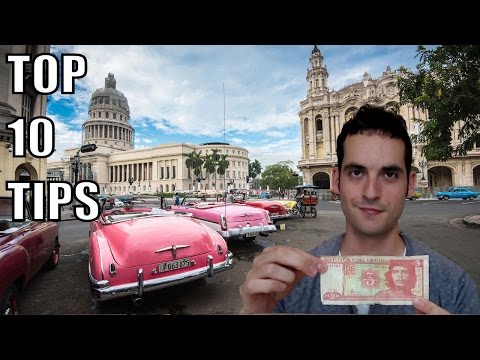
Traveling to Cuba, especially after the easing of travel restrictions from the US in previous years, became one of the most exhilarating experiences for tourists seeking a unique blend of culture, history, and pristine natural beauty in 2017. With its charming colonial cities, vibrant music scenes, and beautiful beaches, Cuba offers a step back in time and promises an adventure like no other. Here are the top ten travel tips that were essential for making the most out of a Cuban vacation in 2017:
1. **Travel Documentation and Legal Requirements**: Prior to 2017, traveling to Cuba for Americans was heavily restricted. Although regulations were relaxed by then, it was still necessary to comply with U.S. rules on travel. Most travelers needed to qualify under one of 12 categories of authorized travel such as educational activities or humanitarian projects.
2. **Cash is King**: Credit cards issued by U.S. banks still didn’t work in Cuba in 2017, so carrying cash was essential. It was advisable to exchange some money into Cuban Convertible Pesos (CUC) upon arrival and use local currency (CUP) for smaller purchases like street food or bus tickets.
3. **Learn Some Spanish**: While you could find English speakers in tourist areas and major hotels, learning some basic Spanish phrases greatly helped with navigating more local areas and interacting with residents.
4. **Stay in Casas Particulares**: For a truly authentic Cuban experience, staying in ‘casas particulares’ (private homes licensed to offer lodging services) was highly recommended over traditional hotels. This not only offered a glimpse into daily Cuban life but also supported local families directly.
5. **Internet Access Is Limited**: Having consistent internet access continued to be a challenge in Cuba as of 2017. Wi-Fi was available in major hotels and some public squares but purchasing internet cards from ETECSA (the state telecom provider) was often necessary.
6. **Embrace Local Transportation**: For short distances within cities, hopping on a ‘bici-taxi’ or even a classic car ride offered both an affordable means of transport and an authentic local experience.
7. **Engage with Local Culture**: From salsa dancing lessons to exploring museums like Havana’s Museo Nacional de Bellas Artes and attending live music performances at clubs – engaging with the rich cultural offerings helped tourists gain deeper insights into the vibrant cultural fabric of Cuba.
8. **Protect Yourself from the Sun**: The Cuban sun could be quite fierce throughout the year; hence carrying sunscreen, sunglasses, and hats protected travelers from sunburns while enjoying outdoor activities like walking tours or beach excursions.
9. **Try Street Food**: Sampling local cuisine through street food offered not only value for money but also delicious insights into Cuban culinary traditions—try local specialties like ‘ropa vieja’ (a shredded beef dish), ‘tostones’ (twice-fried plantain slices), or ‘churros’.
10. **Plan for Restricted Areas**: Certain areas remained restricted or required special permits for tourists even by 2017; thus doing thorough research or opting for guided tours ensured that travelers did not unintentionally breach any regulations.
Traveling to Cuba during this time presented an incredible opportunity to experience its transition period firsthand while indulging in its timeless charms—a genuinely enriching journey steeped in history yet buzzing with contemporary energy.
